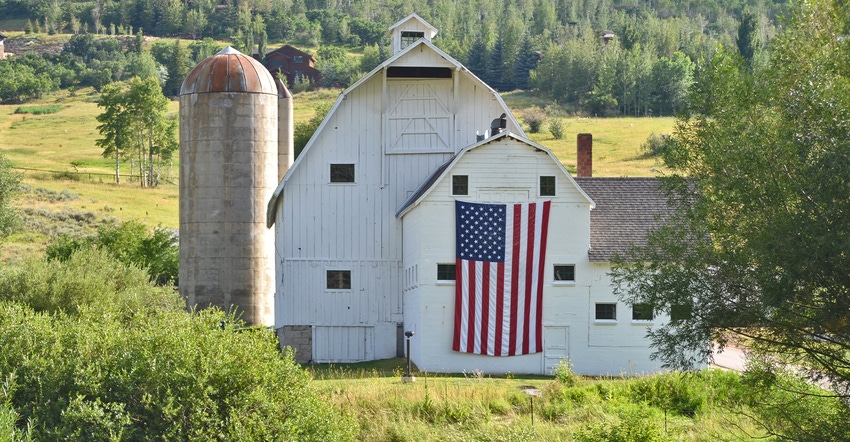February 24, 2020

By Will Robinson
Growing up on a family farm, I believed the farmer exemplified the "American dream."
In my mind, the American dream is somewhat different for every individual, but holds common themes throughout. Historically, I think the American dream has been the opportunity to create and build one’s legacy from nothing.
Often, that dream involved being your own boss and turning your joy into a craft that could earn money. No profession better fits that vision than farming, and rural America was where those visions came true.
Farmers are some of the most creative and resourceful people I know. It doesn’t matter if the task is patching a water leak with spare piping from past jobs or doubling global food production in the next few decades — farmers find a way.
To me, farming is the most intimate profession that exists in the world today. More than 90% of farms in the U.S. are family-owned. In no other industry do families and communities work together and lean on each other for support in the same way.
But America’s rural communities are slowly declining. For instance, my hometown’s population has dropped by about 500 residents in my lifetime. That is nearly one-third of the town’s former population. So, why are our small towns fading away?
Declining state
Farmers are the lifeblood of small towns and the state of Missouri, where agriculture is by far the largest economic driver. Jump back in time to the days when my grandfather was my age and the U.S. was racing to reach the moon, and the average-size farm was nearly half of what it is now.
According to the USDA Economic Research Service, in 1906 the average-size farm containing crop ground was 234 acres, compared to 444 acres now.
With more farming operations, there were more farmers and farmhands. More farmers and farm employees meant more people with income needing goods and services. In small towns, that meant an opportunity for mom-and-pop shops of all kinds to be established and do a profitable amount of business.
Since the days of what I’ll call the “golden age of small towns and rural America,” the supply chain of the American dream has been disrupted.
Cause of change
When looking at most groundbreaking inventions — new ways of thinking or doing things — there is always one common thread. The old method of doing things was disrupted. When Henry Ford installed the assembly line, he forever revolutionized industrial America. When the Wright brothers took flight, air travel eventually became the most effective mode of travel for long-distance trips.
As technology continues to advance and at a faster rate, there will be more chances for supply chains to be disrupted by new, more effective and efficient ways of doing things.
Recently, while at the store with a friend, it occurred to me that I had not physically gone to the store for anything other than food and hygiene products in several months. I mostly find things I need or want to buy on Amazon. These types of disruptions make running a successful mom-and-pop shop less viable as time goes on.
While issues such as a lack of broadband and health care access have been struggles in rural communities, in my opinion, the leading cause of the decline in rural populations has been the development of better technology and techniques that have allowed farmers to farm more ground with far less help. Because of this, the communities around farmers and agriculture also have been shrinking.
While this viewpoint is a vast oversimplification, it is not all gloom and doom. The key to sustaining America’s rural communities is the opportunity for economic development, and I think the cause of the problem also is the solution.
Tech to the rescue
Advancements in farming technology have meant record levels of production while using fewer resources. It also has meant more opportunities for the development and maintenance of the hardware and software farmers need to do their jobs as effectively as possible.
When it comes to rural broadband, Missouri ranks third in number of residents without broadband access. The top two states are California and Texas, which contain far more people.
Increased rural access will provide residents of rural communities an equal platform to compete in today’s job market and will make working remotely a more viable option. It also will improve rural communities’ quality of life, bringing rural residents up to the speed of today’s world.
The American dream is not dead, or even dying. But it is changing, and so are our rural communities.
Robinson is a senior majoring in science and agricultural journalism at the University of Missouri College of Agriculture, Food and Natural Resources. Contact him at [email protected].
You May Also Like




